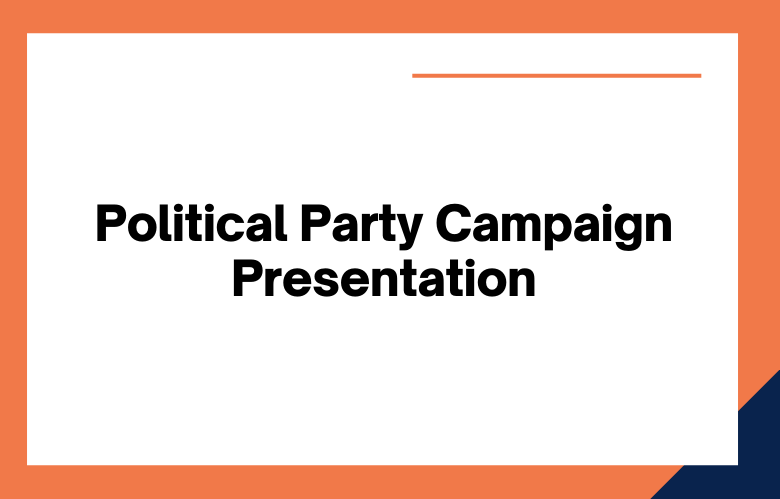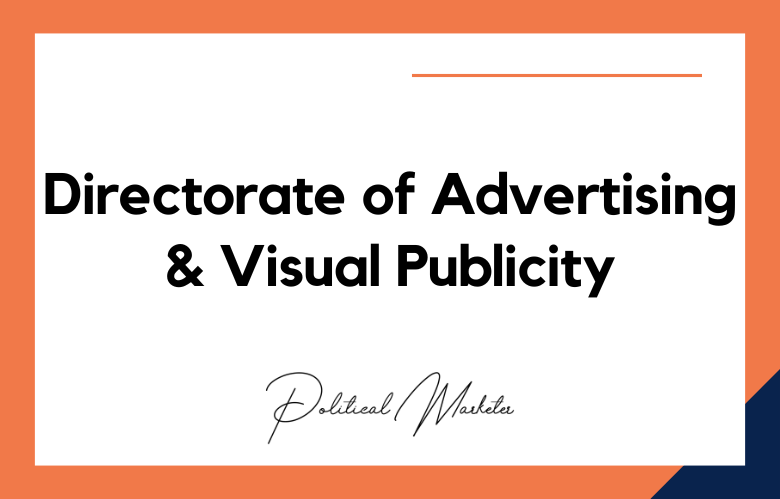First impression is important in any situation, which goes double for political party campaigns. A well-presented campaign can make all the difference in gaining support from voters. We’ll provide some tips on how to give your campaign the best possible presentation.
Are you giving a political party campaign presentation soon? Whether it’s to persuade people to join your party or get them to vote for your candidate, here are some tips on making your presentation as practical as possible. Remember these best practices when crafting your speech, and you’ll leave a lasting impression on your audience!
Political Party Campaign Presentation Best Practices
- Start by introducing yourself and your campaign
- Outline your platform, including key points
- Explain how you plan to get things done if elected
- Showcase your qualifications and experience
- Make a strong case for why people should vote for you
- Finish up by thanking everyone for their time and reiterating your key points
- Start by introducing yourself and your campaign
- Outline your party’s beliefs and values
- Explain your policy proposals
- Showcase your achievements and qualifications
- Make a strong case for why you should be elected
- Appeal to voters’ emotions
- Use data and statistics to back up your points
- End with a call to action
- Start by introducing yourself and your campaign
- Outline your crucial platform points
- Explain your vision for the future of the country/state
- Showcase your experience and qualifications
- Answer any questions from the audience
- Thank everyone for their time
- Establish your campaign goals
- Create a strong message that resonates with voters
- Craft a positive image for your party
- Use social media to reach out to voters
- Organize events and rallies
- Appeal to specific demographics
- Attack your opponents’ policies and records
- Stay on message
- Start your presentation by introducing yourself and your political party
- Outline the key points of your campaign platform
- Answer any questions from the audience
- Thank everyone for their time and participation
- Start by introducing yourself and your campaign
- Outline your crucial platform points
- Explain your plan for the future of the country/state
- Answer any questions from the audience
- Thank everyone for their time
- Establish your campaign’s tone of voice and stick to it
- Make an excellent first impression- be professional and courteous
- Keep your presentation brief and to the point
- Use clear, concise language
- Stick to the facts- don’t make any promises you can’t keep
- Be organized
- Practice your presentation beforehand
- Dress appropriately for the occasion
- Start by introducing yourself and your campaign
- Outline your party’s values and what you stand for
- Explain your policy proposals
- Showcase your team’s experience and qualifications
- Make a strong case for why people should vote for you
- Thank people for their time and consideration
- Start by introducing yourself and your position within the party
- Outline your crucial platform points
- Showcase your team’s experience and qualifications
- Make a strong case for why people should vote for your party
- Be clear about what you will do if elected
- Answer any questions from the audience
- Thank everyone for their time
- Establish a clear objective for your presentation
- Gather information about the audience and their needs
- Outline your key points before you start writing
- Write a strong introduction that grabs your audience’s attention
- Use visuals to support your points
- Make sure your language is easy to understand
- Practice, practice, practice!
Political Campaign Presentation Best Practices
- Introduction
- Purpose of the presentation
- The candidate’s qualifications and experience
- Campaign promises (or lack thereof)
- References
- Be passionate about your campaign
- Create a clear, concise message for voters to understand
- Use statistics and facts to back up claims
- Stick to one central theme or issue relevant to most potential voters in your district.
- Keep it short- try not to go over 10 minutes
- Introduce yourself and your team
- Explain the purpose of the presentation
- Summarize your key points in bullet-point form
- Include a summary of what you will discuss next, including visual aids if necessary.
- Add any personal anecdotes or stories that illustrate the points you’re making.
- Ask for feedback at the end
- Have a clear, concise message
- Use visuals to your advantage
- Be mindful of the audience’s attention span
- Keep it short and sweet
- First, establish your campaign’s message
- Next, identify the target audience and their interests
- Then, create a list of talking points that address the main issues in an appealing way
- Consider what you want to convey about yourself as a candidate- are you more serious or humorous? This will affect how you present your talking points
- Make sure to include visuals like photos and video clips so people can get to know who they’re voting for
- Introduce yourself and your campaign
- List the accomplishments of your campaign so far
- Outline what you hope to accomplish in the future
- First, introduce yourself and your company
- Give a brief overview of the campaign’s strategy
- Outline the campaign timeline
- Describe how you will measure success for this campaign
- Discuss any other pertinent details
Conclusion
Political campaigns are won and lost by the smallest of margins. The decisions you make in your presentation can be the difference between winning and losing an election. Reach us for more information about our political campaign consulting services, and let us help you put together a winning presentation that will get you elected!
Political Party Campaign Presentation Best Practices: FAQs
What Is a Political Campaign Presentation?
A political campaign presentation is a structured visual and verbal communication tool used to convey a candidate’s message, vision, strategies, and achievements to internal teams, voters, or stakeholders.
Why Are Presentations Important for Political Campaigns?
They help align teams, pitch ideas to donors, explain policy proposals, influence media narratives, and communicate directly with the public in a concise, engaging manner.
What Should Be the Core Focus of a Campaign Presentation?
The core focus should be clarity of vision, policy priorities, voter appeal, and a compelling call to action, supported by data, visuals, and real-world impact.
How Should a Political Party Structure a Presentation?
An effective structure includes an introduction, campaign goals, key issues, strategies, target segments, communication plans, and a closing appeal or rallying message.
What Are Common Mistakes in Political Presentations?
Common errors include information overload, lack of focus, weak storytelling, overuse of jargon, poor design, and ignoring the emotional connection with voters.
Should Presentations Use More Visuals or Text?
Visuals should dominate. Graphs, images, icons, and infographics make data more digestible and help maintain audience attention better than dense paragraphs.
How Long Should a Political Presentation Be?
The ideal presentation should last 10–20 minutes depending on the audience. It should be concise, purposeful, and adaptable for different formats or attention spans.
What Types of Slides Are Essential in a Campaign Deck?
Essential slides include candidate biography, problem statement, manifesto highlights, voter segmentation, media plan, funding strategy, and impact tracking.
Can Data Be Used in Political Presentations?
Yes, data supports credibility. Poll numbers, voter demographics, social media insights, and impact stats enhance trust and inform strategy.
How Can a Presentation Appeal to Emotion and Logic?
Combining storytelling with facts, showing real-life testimonials, emotional imagery, and solution-oriented messaging engages both hearts and minds.
Is It Effective to Include Opponent Comparisons in Presentations?
Yes, but carefully. Contrasts should be factual, respectful, and issue-based rather than personal or inflammatory to maintain professionalism and credibility.
Should Campaign Presentations Be Customized for Different Audiences?
Absolutely. Messages should vary for internal teams, voters, donors, media, and youth groups, while keeping the core narrative consistent.
What Tools Can Be Used to Create Political Presentations?
Popular tools include PowerPoint, Keynote, Canva, Google Slides, Prezi, and Figma for design-focused teams seeking more polished outputs.
How Can a Political Leader Deliver a Great Presentation?
Strong delivery requires confidence, storytelling, visual support, audience awareness, eye contact, and practice. Passion and authenticity are key.
What Role Does Branding Play in Presentations?
Consistent use of party colors, fonts, logos, and slogans reinforces recognition, professionalism, and trust across all presentation formats.
Should Presentations Be Shared Online After Events?
Yes, sharing decks or snippets via social media, websites, or email boosts transparency, digital reach, and post-event engagement.
How Can a Presentation Address Voter Pain Points Effectively?
By identifying local issues, offering relatable solutions, using case studies, and showing the impact of policies in a visual, emotionally compelling way.
What Is the Best Way to End a Political Presentation?
End with a strong call to action, such as voting, volunteering, donating, or sharing. Reinforce hope, unity, and the campaign’s core message.
Are Video Clips or Animations Useful in Presentations?
Yes, short videos and motion graphics can break monotony, boost emotional appeal, and explain complex ideas quickly and memorably.
How Often Should Campaign Teams Update Their Presentations?
Regular updates are necessary to reflect current issues, new data, campaign progress, and shifting voter sentiment or media narratives.
One way to get in touch is by filling out our online form on this site or give us a call at
+91 9848321284. Let’s work together today!











